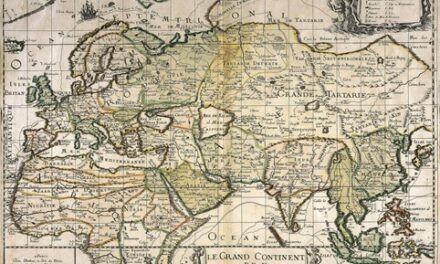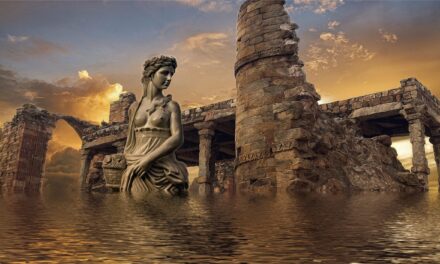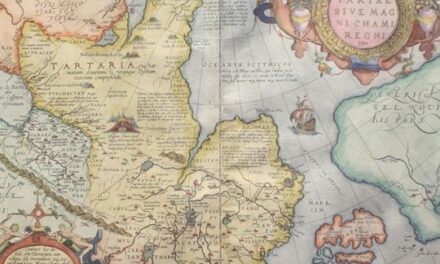Finally a substantial publication, edited by Guido Maria Stelvio Mariani of Costa Sancti Severi and myself, is about to be released in bookshops, supported by critical essays and explanatory notes, which presents in its Italian translation the first of ten scrolls constituting a vast piece of work called The Xunthye or The Book of Scrolls, attributed by the Mysterical Tradition to Uelesh of House Ulhe, an author who would have lived in the Xth millennium BC, in the last phase of the civilization that flourished on the “Seven Great Islands of the Western Sea” and today commonly known as “Atlantis”. A civilization that would have tragically disappeared around 9,600 BC. due to that second great cometary impact which, as many scientists claim today, hit and heavily ravaged our planet, shifting its axis, putting an end to the Recent Dryas and causing a sudden rise in the level of the seas and oceans from 120 to 200 meters. That apocalyptic event, remembered by all the ancient mythological and religious traditions that would have plunged the world into barbarism, bringing about the end of a previous long evolutionary line of civilization.
In a certain sense, this publication represents a landmark, because until now certain texts had never left the restricted area of mystery schools and were therefore not accessible to the layman, available or freely consultable.
As I explained in the first volume of my essay “From Eleusis to Florence: the Transmission of a Secret Knowledge” and in a long series of articles published during 2018 on Archeomysteries, the Mystery Schools of the Mother Eleusins, surviving the Christian persecutions of the late Roman Empire and necessarily entering secrecy to continue to exist and perpetuate themselves, they have handed down and preserved over the centuries a vast heritage of ancient texts and documents which have remained completely unknown to the profane world until today. Texts and documents that were originally kept in the libraries and archives of the Mother Shrine of Eleusis and its priestly schools, as well as other important Temples and Sanctuaries of Eleusinity in Greece, Asia Minor, Egypt, Italy and other regions of the Mediterranea area, and which were saved from destruction and made safe by diligent Priests and Initiates, often at the risk of their own lives.
The Eleusinian texts now safeguarded in Florence. They mostly come from the libraries of the Eleusinian Family Mother of Prytanic priestly rank of the Mariani di Costa Sancti Severi, descendant by bloodline from the Primary Eleusinian Tribe of the Keryx, are mostly of a religious, theological – mythological, ceremonial and ritual nature. There are sacred texts of Eleusinity, some of which are preserved in their entirety, others in scattered fragments brought into medieval codes; there are collections of sacred hymns, prayers and religious songs. There are ritual and ceremonial calendars concerning religious festivities and ceremonies, including those of an initiatory nature, establishing the content and conduct of the ceremonies themselves. Among the texts of a theological-mythological nature, there are cosmogonic and theogonic treatises concerning the origin of the Gods and the Universe, texts relating to the creation of mankind, texts on the nature and characteristics of the Gods, and collections of prophecies and prophecies, with truly impressive contents. Then there are numerous treatises of a scientific nature (astronomical, mathematical and geographical), philosophical texts, historical chronicles relating to the Eleusinian ecclesial institutions and their priestly hierarchies and, finally, texts that we could define as purely historical and literary in nature, acquired in ancient times from the archives of the Sanctuary of Eleusis and preserved in the clandestine phase due to the importance attributed to their contents.

(Source: Pixabay)
The vast majority of these texts are, for obvious and understandable reasons, covered by the rigor of the initiatory secret and, consequently, have never been and probably never will be usable by profane circles, or in any case unrelated to the mystery schools themselves, despite the fact that the Eleusinians Mother have on several occasions admitted and confirmed its existence. But, within the framework of a gradual “opening” of the Eleusine Mother institutions to the profane world, started albeit with caution since the 1980s – an opening, thanks to which the publication of numerous articles and some essays has been made possible – the decision to gradually make part of this vast textual heritage available to the public, but above all to researchers and scholars. This decision, made at the top of the Institution, does not concern, nor will it probably ever concern, the initiatory texts of Eleusinity, for various and obvious reasons destined to remain secret, but a limited number of works of a historical, geographical, scientific nature and literary, not directly connected with the Eleusinian Mystery Tradition and with its Doctrine, but nonetheless acquired over the centuries by the Mystery Schools and diligently preserved and conserved by them. And among the latter there are some of extraordinary importance, as they are attributed, according to Tradition, to authors who lived in an era prior to the commonly known and accepted history, authors who would be attributable to a great civilization preceding ours, which evolved and developed on a set of lands that disappeared between the waves of today’s North Atlantic Ocean following a huge cataclysm generated by two successive cometary impacts that occurred between 10,800 and 9,600 BC. Lands mentioned by these texts and by the Mystery Tradition, as we have
already mentioned, such as the “Seven Great Islands of the Western Sea”.
… authors who would be attributable to a great civilization preceding ours, which evolved and developed on a set of lands that disappeared between the waves of today’s North Atlantic Ocean following a huge cataclysm generated by two successive cometary impacts that occurred between 10,800 and 9,600 BC.
There had already been, on the Eleusinian side, already in the 90s a first authorization to make public mention of these collections of texts, authorization which was followed by the publication, in 1996, of an essay by Guido Maria St. Mariani di Costa Sancti Severi entitled “The Science of Atlantis: the Seven Great Islands of the Western Sea according to the Archaic-Erudite Discipline”, a book now out of print and of which a new edition is expected to be released soon, revised and expanded in content, which will be published by Edizioni Aurora Boreale. In this essay it was explained how the ancient mystery schools of Eleusis had inherited certain collections of texts from some ancient initiatory orders whose origin dates back to the Minoan civilization of Crete, initiatory orders that would later merge, in the XIIth century BC, into the larger container of Eleusinity, a fact that would explain why these texts were kept in the Sanctuary of Eleusis.
The publication, in 2010, of Paolo Rumor’s essay “L’altra Europa” (The Other Europe) [1], a very controversial book and defined by many as “shocking”, in a certain sense metaphoroically opened a”breach in the dyke”. Based on documents, letters and manuscripts collected over the years by Giacomo Rumor, Paolo’s father and exponent of the Christian Democrats, as well as right-hand-man of Cardinal Giovanni Battista Montini (the future Pope Paul VIth, who was for many years at the top of the Vatican Secret Services), and in this capacity responsible for attending those international meetings and those secret meetings which had the function, from the last years of the IInd World War until the 1950s (in particular from 1944 to 1955), to plan the future European Community. The author of “L’altra Europa” brought into the open something disturbing and unexpected. Behind the will and the determination to arrive at a political and economic unity of the European continent there would have been a project that had its roots well back in time, going beyond the history of the last few centuries, the Modern Age, the Middle Ages, even going beyond classical antiquity. And several politicians who played a key role in the planning and implementation of European unity, from Charles De Gaulle to Maurice Schumann, from Cesare Marzagora to Jean Monnet, just to name a few, would have been linked or would have been part of a extremely secret and elitist organization, in the text conventionally called “the Structure”, whose origins date back as far as the 9th millennium BC, in the aftermath of those great cataclysms of planetary scope that determined the end of the civilization of the time. An organization of an initiatory nature which would therefore have directly inherited, guarded and transmitted, in a
way not very different from what the Eleusinians did, the legacy and the knowledge of a previous ancient civilization, basing it on this legacy and on this “memory” his whole action and his hidden and obscure programs; an extremely complex and ramified structure which in fact ranks among the few and mysterious organizations that have been contending for the fate and destinies of the world since time immemorial and that would have “enlisted” among their ranks, over the centuries, influential politicians, scientists, esotericists (from the famous English magician of the Elizabethan Age John Dee to Eliphas Levi and Georgii Ivanovich Gurdjieff) and important exponents of culture. All this emerges clearly and unequivocally from the correspondence between Giacomo Rumor and some of the European politicians mentioned above and from confidences from Rumor collected between the 1940s and 1950s. And what in the eyes of the ordinary citizen could appear as mere science fiction also appears in the eyes of those who are able, possessing the correct interpretations, to understand the scope of certain revelations, a picture of absolute plausible reality. And this indeed appeared to the eyes of us Eleusinians, favoring in a certain way our gradual openings to the profane world.
Behind the will and the determination to arrive at a political and economic unity of the European continent there would have been a project that had its roots well back in time, going beyond the history of the last few centuries, the Modern Age, the Middle Ages, even going beyond classical antiquity.
Those ancient initiatory orders which were at the basis of the birth of the Eleusinity Mother between the XIIIth and XIIth century BC. and that in the context of the latter they transmitted and poured their knowledge that had arisen centuries earlier in the context of the Cretan Minoan civilization and had in turn inherited the memories and knowledge of a previous mother civilization of which the Crete of the Minos would have been nothing else that the main outpost in the Mediterranean. A civilization that is commonly,
in the collective imagination, identified with Plato’s Atlantis, even if it never called itself, as we will explain, with this name. And the Mystery Tradition, and specifically a particular branch of it known as the Archaic-Scholarly Discipline, transmitted within the Eleusinian Mystery Schools, teaches us that this civilization, from which a large part of the subsequent ancient Mediterranean civilizations derived, was certainly not the only one to have fully evolved and developed in that phase of world history prior to the great
planetary upheavals of the XIIth and XIth millennium BC, a phase which, conventionally, we could define as “antediluvian”.
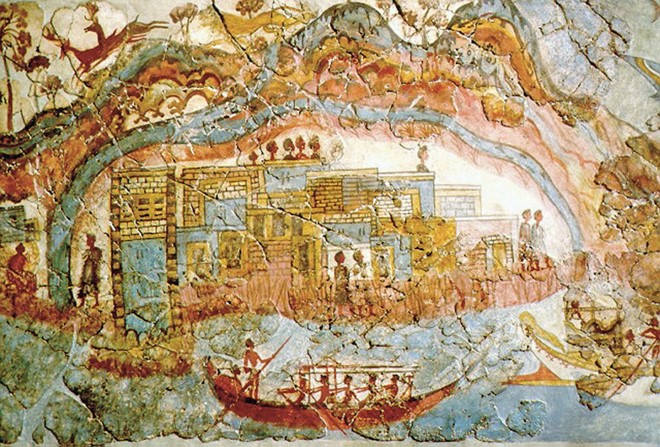
(Fresco from the excavations at Akrotiri, Santorini, Greece. Source: Wikicommons)
This “Atlantean” society, located on the Seven Great Islands of the Western Sea, lands which, as we have said, arose in the Northern part of the Atlantic, and which according to Tradition conquered the current Central- Southern parts of the American continent, the Mediterranean basin and the Central-Southern part of the European Continent ( Northern Europe was at the time largely covered by glaciers), North Africa, including present-day Egypt, and parts of the present-day Middle East, engaged in a long series of wars with other independently developed civilizations in Anatolia, in the Balkan Peninsula, in the Middle East, in the Iranian plateau, in the Indus Valley and in Egypt itself. Civilizations also of a warrior nature, but characterized by a different ideological, religious and cultural approach which placed them in direct competition with the “Atlantean” one, inevitably leading them to collide with it and to be largely subjugated by it.
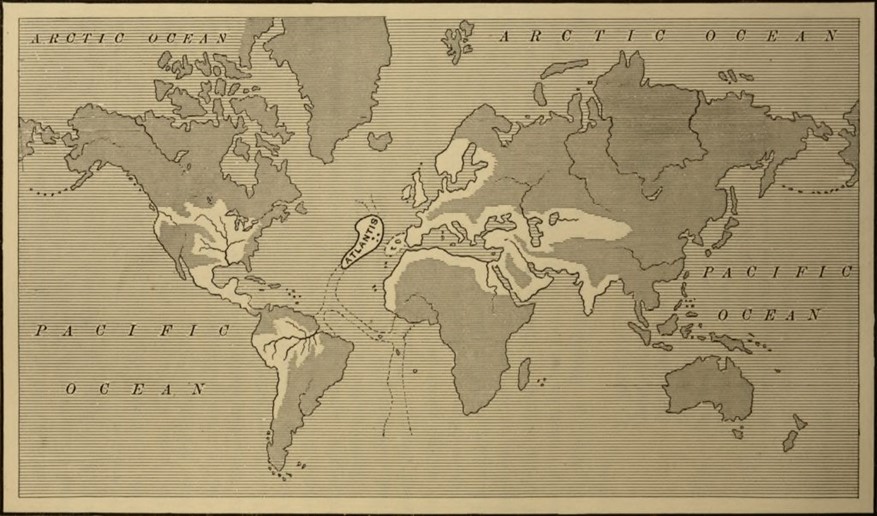
The hypothetical extent of the Atlantis empire, taken from Atlantis: the Antediluvian World by Ignatius Donnelly, 1
On the basis of what we have been able to ascertain from a comparative analysis of the documents of the Rumor Archive reported in “L’altra Europa” with documents in our possession, it appears evident not only the plausibility and truthfulness of the framework configured in this text, but also that, which in it, is phantomly called “The Structure” corresponds to a reality well known to us Eleusinians for a long time. An organization, therefore, very real and concrete, in fact responsible for many of the historical events of the last centuries and millennia, but decidedly hostile to us and with which we have clashed on several occasions throughout history. An organization, therefore, really very ancient and which has up to now preserved and transmitted internally the memories and cultural heritage of an antediluvian civilization ideologically and religiously enemy and adversary of the “Atlantean” one. And, after having made contact with the authors of L’altra Europa and having acquired further elements from them, our conviction in this regard was decisively strengthened, favoring our decision to authorize the partial publication of some of the texts of the Archaic-Erudite Discipline handed down from our mystery schools.
We have in fact considered, also following the publication, in 2015, of Graham Hancock’s essay “Fingerprints of the Gods” [2], in which the scientific evidence of the two cometary impacts that in 10,800 and 9,600 BC are presented in great detail. devastated our planet, erasing its civilization, and following an increasingly rapid and growing number of archaeological discoveries tending to clearly backdate the development and evolution of human civilization (in particular the site of Göbleki Tepe in Turkey and the complex of pyramids of Visoko in Bosnia), that the time was finally ripe for such a publication.
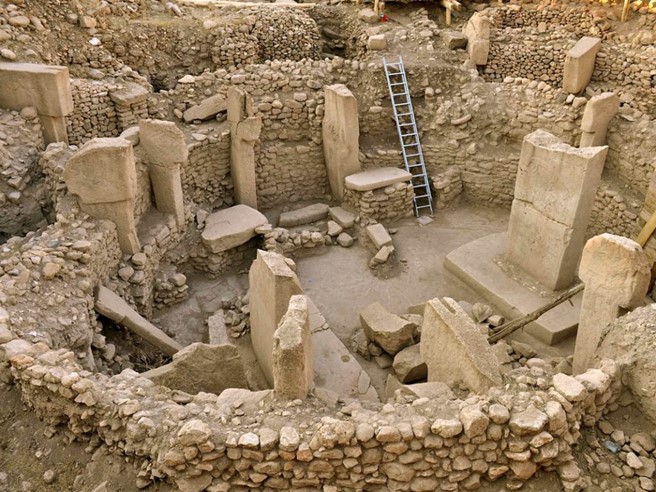
(View of the excavations at the Göbleki Tepe site in Türkiye; Source: Wikicommons)
We are talking, in particular, of two fundamental collections of texts handed down by our mystery schools: “The Book of Scrolls”, made up of no less than ten voluminous tomes and attributed according to the Mystery Tradition to an author known as Uelesh of House Ulhe, and the even more voluminous sixteen “Books of the Tuskeyas”, attributed by Tradition to as many different authors, but the main and most relevant of which is attributed to an author known as Rhashamele’sh of House Fhanhia.
Both Uelesh of House Ulhe and Rhashamele’sh of House Fhanhia and the other fifteen authors of the Books of the Tuskeya are considered by the Mystery Tradition to have lived in the last phase of the civilization of the Seven Great Islands of the Western Sea (Rhashamele’sh during the Age of the Oligarchy, therefore between 10,259 and 10,224 BC, and Uelesh in the subsequent phase of the so-called “The Tanic Empire”, which goes from 10,223 to 9,528 BC), and in these works they are retraced and narrated, with an incredible wealth of geographical details and mythological-religious, scientific and linguistic information, the origin and history of this civilization, according to an incredibly vast time span: over nine thousand years!
In the Eleusinian field we have been studying these texts for many generations, but one of the reasons that have held back their publication up to now, beyond the reasons of initiatory confidentiality, is the fact that they, in the form in which we possess them, cannot prove anything of their extraordinary contents. In fact, we would be presumptuous if we wanted to consider these texts as certain historical sources or direct sources, since we certainly do not have their original versions, which are believed to have been written on tablets or written on papyrus. Due to a custom rooted in the context of the mystery schools of Eleusinity, a custom aimed exclusively at the preservation of the textual heritage over time, these texts have been the subject of numerous (albeit plausibly reliable) subsequent transcriptions, which took place from antiquity up to the last few centuries by officials and scribes who dedicated years and years of painstaking work to this activity. In summary, the oldest versions of these texts in our possession are some
of their manuscript drafts, both in Latin and in Italian, which do not go beyond the XVIIIth century, and the most “recent” are drafts, both manuscripted and typewritten, almost exclusively in Italian, dating back to the first half of the XXth century. In the context of our mystery schools, therefore, we have always limited ourselves to the study and analysis of certain works, without any pretension of considering them either as “sacred texts” or as “revealed books” (which, moreover, they are not) nor as a sort of “absolute truth”. And with this perspective, which we believe to be the most correct we could adopt, we are finally preparing for their partial publication, which will necessarily be accompanied by adequate notes and supporting critical essays.
Another reason that has so far held back, or at least postponed, a publication is certainly represented by the impressive amount of these works. Both the ten volumes of “The Book of Scrolls” and the sixteen volumes constituting “The Books of the Tuskeyas”, are composed of several thousand pages (only the first of “The Books of the Tuskeyas”, entitled “The Progenies” and attributed to Rhashamele’sh of House Fhanhia, alone exceeds the two thousand pages!) and a digitization of a limited part of them has only recently been undertaken.
This does not mean that they contain an extraordinary amount of historical, mythological and geographical news and ethnological and linguistic data whose verification, if it were even minimally possible, would open important new scenarios for knowledge and understanding of the history of human civilization.
Assuming, therefore, that there is not the slightest pretense of convincing anyone regarding the content of these texts, our invitation, as their publication will take place, will be to welcome them as literary works of the past, because, basically they can be considered as such. However, this does not mean that they contain an extraordinary amount of historical, mythological and geographical news and ethnological and linguistic data whose verification, if it were even minimally possible, would open important new scenarios for knowledge and understanding of the history of human civilization. The initiates of the Eleusinian mystery schools who, over the last few centuries, have carried out an intense activity of study and exegesis on these texts have always tried to find confirmations of their content and it can be said that, in the Eleusinian context, our mystery schools have carried out and still carry out a work proportionally inverse to that of archaeologists: the archaeologist tries to derive or reconstruct a story from a find, an excavation or a discovery; we have an extraordinarily complex and articulated history at our disposal, and the task we have always set ourselves is to try to verify its reliability or to find confirmations precisely in the light of archaeological discoveries. And we cannot hide the
fact that, especially in the last two decades, in the light of important “uncomfortable” archaeological discoveries that are revolutionizing the now obsolete academic paradigm, many confirmations in this direction have not been lacking.
The collections of the Texts of the Archaic-Scholarly Discipline tell us, as we have already mentioned, the history, the origins and the epic of a human civilization preceding ours, which arose and evolved on seven large islands that once stood in the current Atlantic Ocean north, over a period of nine millennia. Or rather, they tell us and describe the history of the civilization of one of these islands, called En’n and indicated among the seven as the largest by extension (with a surface area greater, according to our calculations, than the current Iberian Peninsula), a civilization to which the same authors to whom these texts are attributed would in fact belong and which over time would have first conquered and colonized the other six islands, in turn inhabited by other populations, imposing on them their own culture and dominion, to then launched itself into a real series of wars of conquest that led to subjugate part of Central-Southern America, the entire Mediterranean Basin, Southern Europe, North Africa and parts of the Middle East. A civilization, therefore, warrior and with an imperialist nature, endowed with great geographical, astronomical and scientific knowledge, a skilled ruler of the seas and devoted to exploration, characterized by a matriarchal social structure and a religion based on the cult of the Titan Gods . A civilization whose disappearance is traced back to 9,528 BC. And it is interesting – indeed, we could say fundamental – is the fact that the end and collapse of the Ennic civilization and of the entire “Seven Great Islands of the Western Sea”, indicated to us in the Texts as having occurred on that date, finds full temporal correspondence with the second major cometary impact that affected the Earth, which according to scientists occurred around 9,600 BC. and that this dating is also mentioned by the great Philosopher-Initiate Plato, who in his famous dialogues Critias and Timaeus mentions Atlantis (Ἀτλαντὶς νῆσος, “Island of Atlas”), its civilization and its disappearance under the waves of the Ocean right at that precise moment in history.
Plato’s point, as the primary and universally known and recognized profane source regarding the mention of “Atlantis”, its history, its description and its tragic end, necessarily deserves some reflections and considerations here and equally necessary insights, since, in the very vast essay on the subject, the Athenian philosopher is always and punctually called into question, both by supporters of the past existence of the lost continent and by skeptics, detractors and deniers of its existence.
As we have already mentioned, in the Texts of the Archaic-Scholarly Discipline handed down by the Mystery Schools of the Eleusinian Mother, no reference is ever made to a hypothetical “Atlantean” civilization (or in any case called as a whole with the name of “Atlantis”). We also speak, as we have seen, of the “Seven Great Islands of the Western Sea”, described to us with extreme precision as located in today’s northern Atlantic, and of one of the civilizations that dominated them, the “Ennica” (a civilization of evident Cro-Magnon type and with physical features that today we would define as “Mediterranean”, evolved and developed on the southernmost island, the En’n, which rose to the west of the Strait of Gibraltar, with dimensions more or less equal to those of today Iberian Peninsula), which first conquered and colonized the other six “Great Islands”, to then venture into the conquest of southern Europe, the Mediterranean basin, northern Africa, the Near East and the Americas, implanting there its own culture and their own traditions.
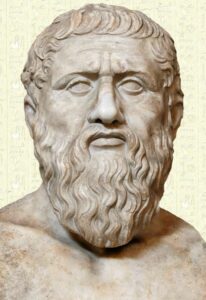
(Marble bust of Plato from the Roman imperial era; Rome, Vatican Museums)
From an Eleusinian point of view, in the context of our mystery schools, where the Texts of the Archaic-Scholarly Discipline are still studied and commented today, the problem of the existence or not of this great past civilization has never been raised. since in the mystery field it has always been considered an objective fact, a very precise historical reality. But we are perfectly aware that this is not the case – and it obviously cannot be – in a profane environment which sees, on the one hand, a multitude of historians, writers and scholars, not always qualified or qualified, intent on demonstrating the reality of “Atlantis ”, unfortunately often also elaborating confused and imaginative theories and trying to identify or place the mythical lost land almost everywhere (from the sands of the Sahara to the Amazon, from Crete to the ice of Antarctica!) except in its real and natural location , ie on the seabed of the North Atlantic, and on the other side the rubber wall of “official” or “academic” Archaeology, determined to deny to the bitter end like a broken record any possibility in this regard. And both of these sides inexorably grip the figure of Plato, “pulling him by the jacket to support their theses”.
Therefore, in our opinion, both the name “Atlantis” and the real obsession of atlantologists, both of yesterday and of today, in relation to Plato and his dialogues Timaeus and Critias, in which the great Athenian philosopher and initiate, who lived between the Vth and IVth centuries BC, notoriously mentioned a great civilization that disappeared nine millennia before his era. Fossilizing on Plato (whose real name was Aristokles; Πλάτων, Plátōn was just a nickname whose meaning is “broad-shouldered”), or in any case exclusively and limitedly to Plato and his dialogues, as many historians have done and continue to do and researchers and many pseudo-seekers of Atlantis from Ignatius Donnelly onwards, clearly leads nowhere from a strictly archaeological point of view. Regardless of what Plato’s sources really were and the fact that a particular initiatory sensitivity is needed (which many historians and profane researchers definitely do not have) to better understand his writings and his message, if we report the passages relating to ” Atlantis” of Timaeus and Critias with the Texts of the Archaic-Scholarly Discipline transmitted by the Eleusinian mystery schools, it appears evident how the Platonic information is partial, limited and incomplete, moreover inserted in the context of maieutic-philosophical dialogues whose objective was intended to be purely formative in an initiatory sense, and therefore in fact not always usable strictly or exclusively historical-archaeological or geographical keys. In our opinion, the only truly reliable elements of the Platonic passages relating to “Atlantis” (elements which, coincidentally, are also the most contested by “academic” Archaeology) are the chronological one, i.e. the placement in time of its disappearance in the Xmillennium BC, and its actual geographical location beyond the Pillars of Hercules, in the North Atlantic. While the territory he describes most likely represents only a portion of the large island-continent of En’n, knowledge of which was probably handed down in the Egyptian priestly circles with which Solon had come into contact. It is certainly not a coincidence that, as shown by the Texts of the Archaic-Erudite Discipline and as we have already mentioned, one of the three regions into which En’n would have been divided is mentioned with the name of Hath-Lan-Thiv-Jhea (name composed of four distinct hieroglyphics, whose literal translation is ” The Great Mother from the Sea” or “The Great Mother of the Children of the Sea”. And that, again according to the Texts of the Archaic-Scholarly Discipline, the Hath-Lan-Thiv-Jhea, before being conquered by the Ennosigei, would have been, like the neighboring Fe-Sehj-Hunhe (Poseidon), a thriving independent kingdom with centuries of history behind it.And both “The Book of Scrolls” attributed to Uelesh of House Ulhe and the sixteen “The Books of the Tuskeyas” tell us of numerous naval expeditions of the Hath -Lan-Thiv-Jhea and Fe-Sehj-Hunhe in the Mediterranean (at the time called the area of the “large internal lakes”, as the Gibraltar canal had not yet been built) starting from
13,000 BC for the Posidonia fleets and about a millennium later for the Atlantean ones led to various phases of conquest of the Mediterranean basin and of today’s Egypt and we can well understand how much the most archaic mythology of the land bathed by the Nile is actually of Posidonia and above all Atlantean origin. This would well explain the persistence in Egypt, even at the time of Solon, of the word “Atlantis”, or the memory of a foreign civilization with this denomination.
In our opinion, the only truly reliable elements of the Platonic passages relating to “Atlantis” are the chronological one, i.e. the placement in time of its disappearance in the Xmillennium BC, and its actual geographical location beyond the Pillars of Hercules, in the North Atlantic.
We also learn, again from the Texts of the Archaic-Scholarly Discipline, how a particular city (but located in another region of the En’n called Ensikhthn, or “Ennosigeo”, the one historically destined to prevail over all the others) is mentioned by Rhashamele’sh in the first of the sixteen “The Books of the Tuskeyas” as Hath-Lan-Thiv-Hesh (name also composed of four Ennic hieroglyphics and translatable – depending on the interpretations – as “The Great Mother from the Stars” or “The Great Mother of the Children of the
Stars”. A city which, as we will be able to explain in our further in-depth analysis, as described to us by the Ennic author, presents quite a few similarities with the description of the capital of Atlantis given to us by Plato in his dialogues. And it is equally perfectly plausible that, after so many millennia, in the time of Solon and Plato there was a tendency in Egypt to no longer grasp the differences between “Hath-Lan-Thiv-Jhea” and “Hath- Lan-Thiv-Hesh”, two names so long gone in the cave of time as to be confused and assimilated into the more generic name of “Atlantis”.
(End of part one)
Notes
- Paolo Rumor (with the collaboration of Giorgio Galli and Loris Bagnara): The other Europe: myths, conspiracies and enigmas in the shadow of European unification. Cit.
- Graham Hancock: Return of the Gods. Ed. Corbaccio, Milan 2016.
- According to what is reported by the Texts of the Archaic-Erudita Discipline, up to the XII millennium BC. the area of the present-day Mediterranean included two large inland lakes, one between present-day Gibraltar and Sicily, the other between Sicily, Egypt, the Greek-Anatolian and Syro-Palestinian coasts. There was, in addition, another smaller lake, corresponding to about half of today’s Black Sea. Also according to these Texts, a large navigable artificial canal was built between Africa and the Iberian peninsula, where today there is the strait of Gibraltar, by the Ennosigeans at the time of the IIIrd dynasty (12.273-11.892 BC.



